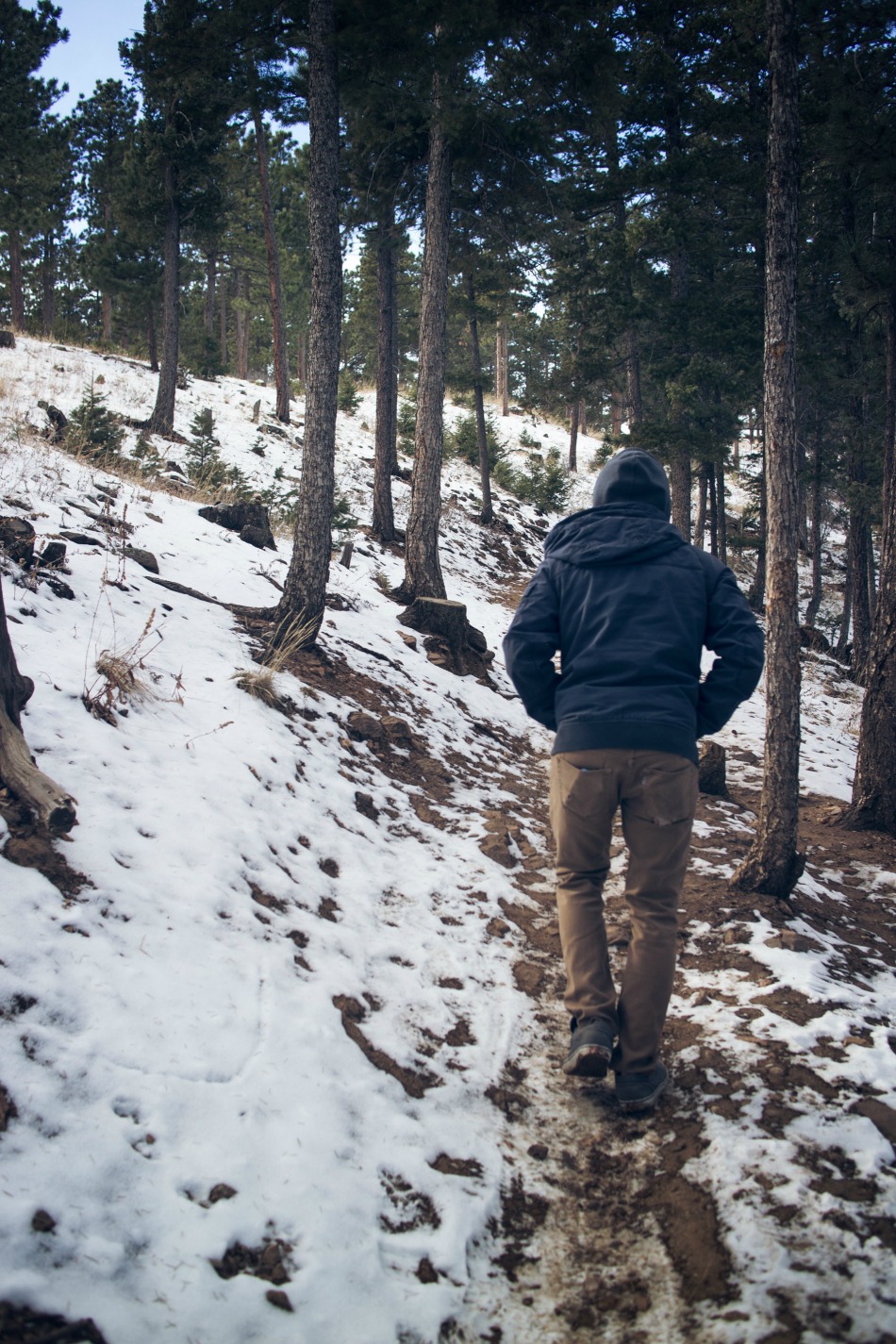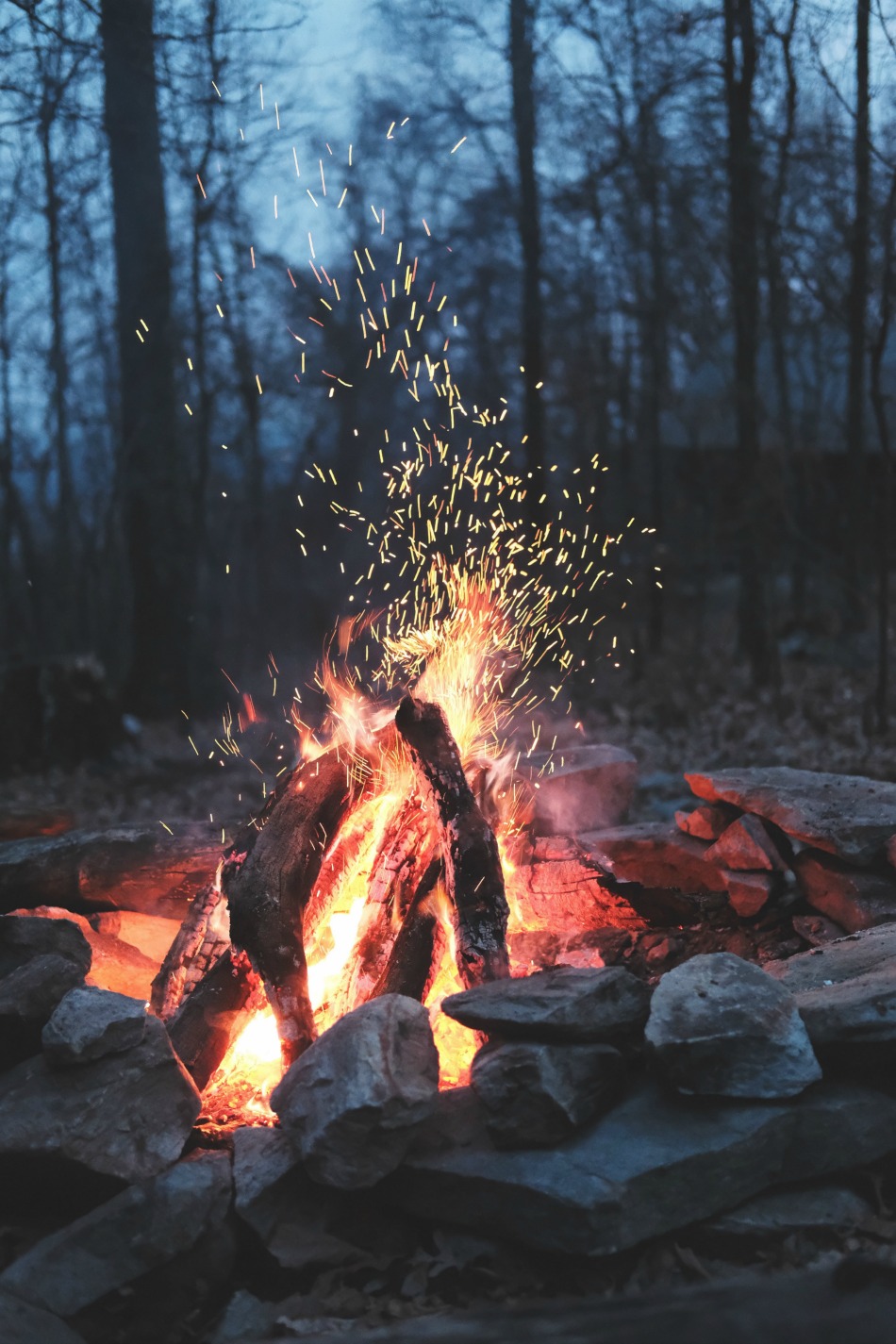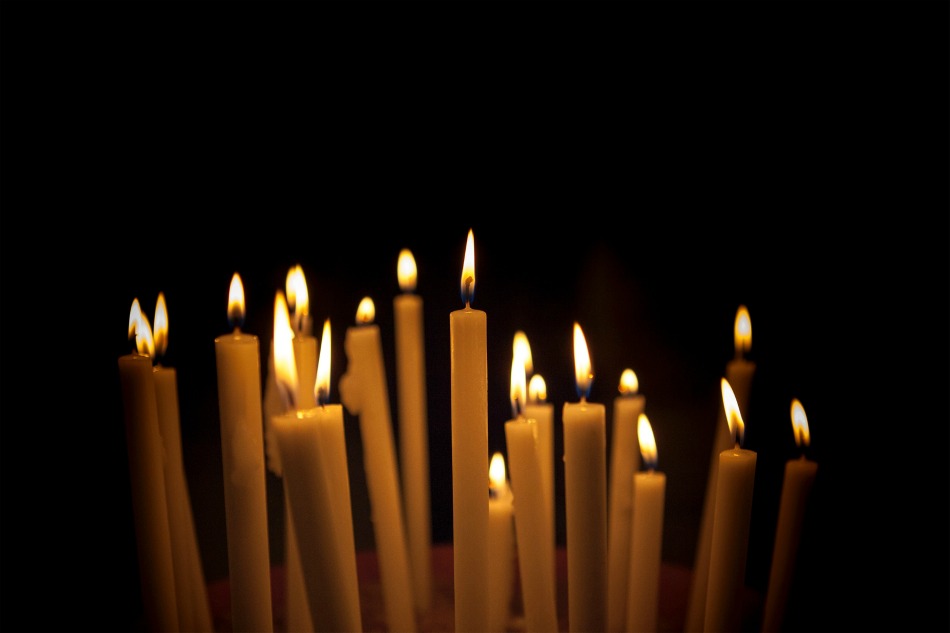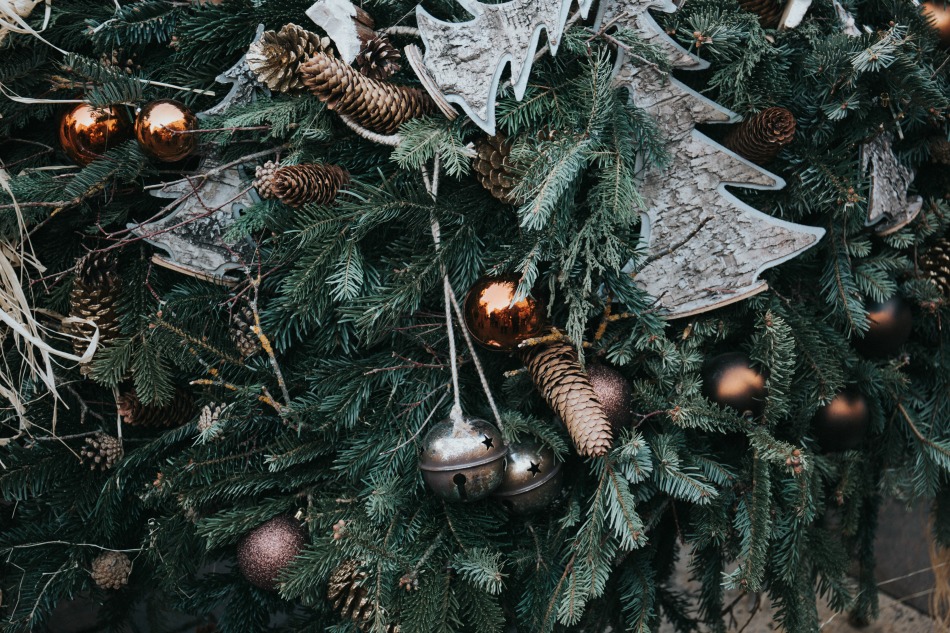
If you didn’t know it, the Winter Solstice is today so I thought it would be appropriate to share some traditional things one can do to celebrate this specific time of year if you’re so inclined. You certainly don’t have to do all these things. Feel free to pick and choose what sounds fun and doable for you and your family.
Before I get to Winter Solstice traditions let me first talk about traditions in general. You see, I’m a big fan of traditions as I feel they help to keep us rooted, whether in our family, our belief system, or our cultural heritage. Traditions also help us remember the past. George Santayana once said… “Those who cannot remember the past are condemned to repeat it.” I think this is a very valid point. Remembering the past through traditions helps us to not only learn from those who’ve gone before us, but in many ways, it helps us to appreciate where we are in our current time in history.

About The Winter Solstice
n modern times, the Winter Solstice marks the beginning of the winter season, but to the ancients, it represented midwinter. Regardless, the Winter Solstice is the shortest day and longest night of the year. After the Winter Solstice, the days begin to lengthen and the nights begin to shorten. This continues until the Summer Solstice (around June 21st) where the longest day and shortest night of the year occur. From there, the days begin to shorten and the nights begin to lengthen until you’re back to the Winter Solstice. Thus, completing a full year. (If you live in the Southern Hemisphere… this will be opposite for you. The Winter Solstice will be in June and the Summer Solstice will be in December.)
The Winter Solstice has been celebrated since ancient times by various people groups, and oftentimes, these celebrations are linked to a variety of religious practices. Like most things in ancient times, people used the sun, stars, and planets to keep track of time and seasons, and they also looked to nature in order to understand more about the way the world worked. The Winter Solstice and many of the traditional elements associated with it are great examples of these practices.
Winter Solstice traditions are mainly centered around fire and light, which is pretty understandable if you look at what this day signifies from an ancient perspective. Before modern inventions, the majority of people’s lives revolved around the sun and daylight. Day-to-day tasks of living were accomplished in the light, and once the sun had set, very little was done before going to sleep for the night. So, as you might imagine, the time of the year when days would begin to lengthen was quite a big deal.
Like I mentioned earlier, traditions help us to learn from those who’ve gone before us and to appreciate where we are in our current time in history. This is very true, at least to me, when it comes to the Winter Solstice. I’m so very grateful for electric light and the money to pay the electric bill. I can’t imagine living day to day, relying only on the sun for light and warmth. Sure it sounds like an adventure, but I’m sure, after a while, it would get very old. I’m very spoilt by modern society and living here in the good ole USA.
This brings us to some festive traditions to celebrate the Winter Solstice, a time of hope for the coming of light and warmth.
8 Winter Solstice Traditions To Celebrate This Year

1. Herbal Beeswax Fire Starters
One key to any Winter Solstice tradition is light.
What better way to have light than a nice, warm fire burning in your wood stove. I love fires in the woodstove. It makes my home feel like a cozy, safe haven in the midst of the dark, cold days of winter. I imagine that in times before electric light, fires were a primary source of light for many homes once the sun had set, especially when candles and oil lamps were limited.
I recently wrote a post about creating herbal beeswax fire starters to help get your fires going. This was our first year making them, but I can see this being a great tradition to do on the Winter Solstice to celebrate the first day of winter and welcome more light into one’s home.
Here’s another type of aromatic fire starter that I’m also excited to try out!
2. Handcrafted Holiday Decor
Besides the coming of light, the Winter Solstice also marks the first day of winter. Since winter is a time of slowing down, hibernation, and death, many people like to decorate the inside of their homes to liven them up. Since stores were non-existent or few and far between (depending on the exact time in history you’re referring to), people made decorations out of everyday materials. Live garland (here and here too!) made of conifers, ferns, berries, sticks, and pine cones were hung over doorways. Garlands of dried oranges, apples, popcorn, and even fresh cranberries were strung up on trees or along entryways. Orange and clove pomanders and herbal potpourri were made to scent the home. Small sticks and twigs were gathered and tied together with twine to make stars that could be hung around the house. Children cut paper snowflakes out to decorate windows.
If decorating your home for the winter months sounds like something you’d like to do, the Winter Solstice is a great day to do it! Just visit some of the links above for some great tutorials on these projects.
3. Make A Yule Log
Often, you’ll hear the Winter Solstice referred to as Yule. This term comes from areas of the world where Christianity had not been introduced, and natives called the winter season “Yule.” When Christianity was introduced and predominantly accepted in an area, the church began to call the season Christmas in honor of Christ’s birth, but many, even some Christians, still referred to the season as Yule. No matter what you call this season, “Christmas” or “Yule,” both refer to the time of the year around the Winter Solstice.
A common Winter Solstice tradition is to make a yule log. A yule log symbolizes new beginnings. A log was often selected at the beginning of the Christmas season and left to sit out as a decoration until it was time to burn it—often as a table centerpiece. They were decorated with evergreen branches, pine cones, holly sprigs, and other herbs or dried fruits that could be found near the home. Many people would also drill holes into the top of the log and place 3-4 candles (red, white, and green) in the log as well. If you’re of the Christian faith, you could choose to use the yule log and its candles for Advent celebrations if you liked.
Large gatherings were held during the burning of the yule log. Songs were sung, people danced, meals were shared, and no work was done while the yule log burned. It was a very special and festive time. While yule logs were traditionally burned on the Winter Solstice, they are burnt on Christmas Eve in many cultures. This is the custom where I’m from—here in the Appalachian Mountains. Another aspect of the yule log tradition is to save a piece of the log to help start next year’s fire. This is supposed to bring good luck during the coming year!
For those who didn’t have a place to burn a yule log, a log-shaped cake was baked, decorated, and eaten instead.

4. Winter Solstice Feast
Traditional Winter Solstice celebrations are a time of gathering and feasting with friends and family. Many people would stay up to watch the sunrise because it’s the longest night of the year. As I’ve already mentioned, various traditions occurred at these gatherings, but one thing is common among all of them. Food!
Food is always a part of any celebration, and Winter Solstice celebrations are no exception. The kind of foods present during solstice gatherings vary from culture to culture. Still, common foods consisted of festive meats like lamb, ham, or roasted chicken, winter root vegetables, and colorful preserved fruits and other sweet treats. Here and here are two websites full of recipes to help you celebrate the Winter Solstice. I’m also sharing some links to other seasonal foods and drinks below as well.
- Wassail
- Mulled wine
- Sun bread
- Yule Log Cake (warning… this baby is FULL of sugar!)
- Eggnog
- Lussekatter
- Candied nuts and seeds
5. Releasing Ceremony
Releasing ceremonies are fun traditions to do on the Winter Solstice. Some people like to release their intentions for the coming year, while others like to release regrets, disappointments, and failures of the current year as a symbolic way to have a clean slate in the coming year.
There are different ways to do releasing ceremonies. The simplest is to hand out slips of paper and pencils, write what you want to release in the coming year on the paper, and burn it. This can be a great visual and help you clear your head and assess your priorities. Besides, writing out negative or burdensome things that you normally wouldn’t share with others and burning them to symbolically release them can positively affect a person’s emotional health.
A more traditional way to do a releasing ceremony is to use a Yule log. On the day of the Winter Solstice (or Christmas Eve if you’re burning it then), with friends or family gathered, pieces of bark are stripped from the log and intentions you have for the coming year or anything negative that you want to let go of are written on the inner bark of the wood. The log and the strips are then burnt while everyone is present.

6. Lights In The Darkness
Seeing how the Winter Solstice celebrates the coming of light, homemade lanterns or candles are often lit and left to burn throughout the night. Many people prepare by making homemade beeswax candles ahead of time, some make ice lanterns to sit outside and burn all night, and others make solstice spirals to walk through, lighting candles as they go. Each of these is a fun way to welcome the light and sun back into your life after winter’s cold, dark days.
7. The 13 Days of Solstice
Perhaps you’ve heard of the 12 days of Christmas. If so, it is an adaptation of the 13 Days of Solstice (or Yule, as it’s sometimes referred).
The 13 Days of Solstice marks the end of the year, from the night before the Winter Solstice (December 20th) to New Year’s Day (January 1st). And like all Winter Solstice traditions, this one is also to celebrate the return of the sun and the coming light and warmth.
As I mentioned earlier, the Winter Solstice and its various celebrations and traditions were often stretched out over a period of 2-3 weeks, beginning with the Solstice itself. Since there wasn’t a day set aside for gift-giving like there is now, many people gave gifts to others over the course of the 13 days of Solstice at the various gatherings and celebrations they went to.
While there are different ways one can celebrate this solstice tradition, one idea is to sing the 13 Days of Solstice song each day, light a candle for each day, and give a little gift that represents the different verses of the song. While there are many versions of the song (I’m assuming it changes based on culture), this is one option. I don’t know about you, but it looks like it could inspire me with some creative gift ideas. Wouldn’t you agree?
The song is sung to the same tune as the 12 Days of Christmas. It starts with, “On the first day of Solstice, this gift was brought to me…” followed by the correct part of the song below. I’ve also included some fun gift ideas you could give someone for each day as well!
- Some healing to set me free (Gift idea: An herbal tea blend.)
- Presents from my love (Gift idea: A thoughtful gift for a specific someone).
- A helping dream (Gift idea: An herbal dream pillow or dream tincture.)
- A branch of evergreen (Gift idea: A handmade wreath with natural decorations.)
- Joyous song (Gift idea: Go caroling)
- Greetings from my neighbors (Gift idea: Take healthy Christmas cookies to neighbors.)
- Good fortune for the year (Gift idea: A list of good wishes you have for someone for the coming year.)
- Fine conversation (Gift idea: A visit to someone you haven’t seen in a while, complete with herbal tea or coffee in hand.)
- Nine pearls of wisdom (Gift idea: A little booklet with nine life lessons you want to pass on.)
- Candles for the lighting (Gift idea: Homemade herbal candles.)
- Deep contemplation (Gift idea: A leather journal, a good pen, and some journaling prompts.)
- Showers of abundance (Gift idea: Text, email, or write a letter telling someone how much they mean to you and some of the positive qualities they possess.)
- A grand celebration (Gift idea: Invite friends to a New Year’s Day gathering at your home.)

8. Decorate Your Christmas Tree
Another traditional Winter Solstice practice is to go outside, cut down some sort of evergreen tree, and bring it home to decorate with friends and family. The origins of this tradition vary depending on the source, but it’s commonly thought that evergreen trees symbolize life amid death (the dark days of winter) or symbolize the coming of spring and warm weather. Large trees were commonly cut down and dragged home. The top of the tree was used inside the home as the main decoration, while the lower branches were stripped and strung together to create garlands hung over the home’s doorways, windows, and other entryways.
Traditionally, homemade items were placed on the tree, such as salt dough ornaments, cranberry and popcorn garlands, paper snowflakes and stars, pine cones, and candles for light.
Let me wish you a lovely holiday season with friends and family, complete with rest and reflection and plenty of meaningful celebrations! And if you haven’t already, I hope you come to know the reckless love of God this year. May His light will shine upon you and through you always! Merry Christmas and Happy Holidays!
If you’re interested in more seasonal living content, I’d love it if you signed up for my bi-weekly email letters. Not only are they filled with seasonal herbal and lifestyle goods, but you also get free, instant access to my Seasonal Living Collective–an inspiration library filled with resources to help make seasonal living a bit more doable for you.
And if you’re looking for more seasonal goodness for the winter ahead, you can find even more winter-related blog content right here.
4.5
5
Oh I LOVE the solstice song! Thank you for sharing.
Lovely Megan! Yuletide Greetings to you too!xx?????
1
3
I love your blog. I have always liked to have herb plants around me – and I grow quite a variety. Their history is fascinating – going back to the days of the Bible. I am in the UK, I live in Plymouth, Devon (where the Pilgrim fathers left from in 1620, we’ll be celebrating the 400th aniversary in 2 years time). I’ve visited the USA and been to new Plymouth and the Plymouth Plantation in Mass, really loved it.
Nice to meet you, Ruth! I’m glad you are enjoying the blog, and I wish you the best as you learn more about the plants that grow around you. It’s a fascinating journey, to say the least. And that’s so cool that you’re from Plymouth! We just studied about the UK in our Halloween homeschool unit study, and we studied the pilgrims in our Thanksgiving homeschool unit study. I’ve never been to Plymouth in Massachusettes, but if we ever make our way up there again, we’ll have to consider stopping by.
Hello Ruth, I live in Mass. and know Plymouth and the Plantation well. I am surprised to hear that you celebrate their departure. I never thought of that part of the story. I’m fascinated! Thank you for sharing.
A song for Solstice (any tune you want)
Solstice is coming, the wheel goes round and round
Solstice is coming, the sun goes up and down
The Holly King is strong, he comes to face his foe
The Oak King is fading, it’s the time for him to go
We celebrate the Yuletide with merriment and love
We join with all our family to thank the Gods above
– by Nancy Sine
Another ritual I do:
I do a bridging ritual between Yule and Christmas, lighting another candle each night. December 20-21 – Spirit (spirit – orange candle) in the evening celebrate Yule, the following day be aware of your spiritual nature. December 21-22 – Ourselves (water – blue ) in the evening quietly nuture yourself and show your family how to be good to themselves. The following day should be one of rest and rejuvenation. This is a good day to make your personal plans and set your one- through five-year goals. December 22-23 – Environment (earth – green) in the evening clean up your space recycle, regift or reuse. On the following day go out in nature. December 23-24 – Others (fire – red) in the evening anonymously do services for others. On the following day, volunteer, contribute, donate, help someone. And enjoy it while you’re doing it! December 24-25 – Family (air – yellow) On the traditional Christmas Eve, be with family. Celebrate in ways that everyone enjoys. Observe others’ traditions while creating your own new ones. On the following day, let pettiness go, give love, share, contribute, listen, forgive and don’t judge.
I love the additional candle lighting idea and what they represent. I’ve noticed that candle lighting ceremonies, at least in my family, help us to slow down and focus on the meaning of each candle — giving us time to focus on that meaning in our own lives. We’re doing an Advent Yule log this year, and my boys are really enjoying it! Thanks for your comments!!
3.5
2
0.5
I love all of it. And you are all so fascinating.
Love this
Thank you! Glad you enjoyed it!
We teach the children about the ancient peoples and how they recognized and celebrated the return of the light, and we have a tree out in my daughter’s back garden that we decorate with dried fruit, seed balls and suet for the birds and squirrels. We teach them that we give to nature and nature gives back to us. Every morning after that, the littles go out on the balcony to watch the creatures come and eat the offerings. They love knowing that they are helping feed the creatures when the weather makes it hard for them to find food.
Oh, I love that. The boys and I always make little pinecone bird feeders in December for the birds around our home. I love watching them. I’ll have to add some dried fruit alongside the birdseed next year. Thanks for sharing!
Lovely article– thank you for sharing. Just one point:
>Large trees were commonly cut down and drug home…
The past tense of drag is dragged, not drug. Sorry–I see this error a lot, and feel the need to spread the word.
Again, great article! Cheers…
Thanks! Updated! The more grammar schoolwork I do with my kiddos, the more I learn (and often) cringe when I reread old blog posts! Thanks for keeping me on my toes!